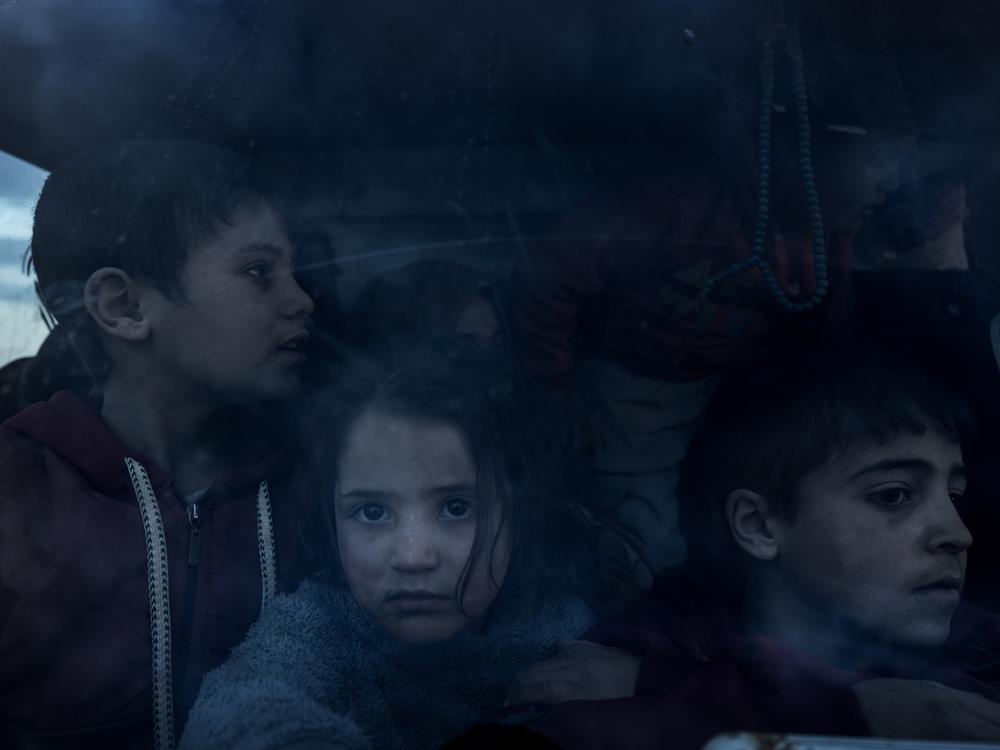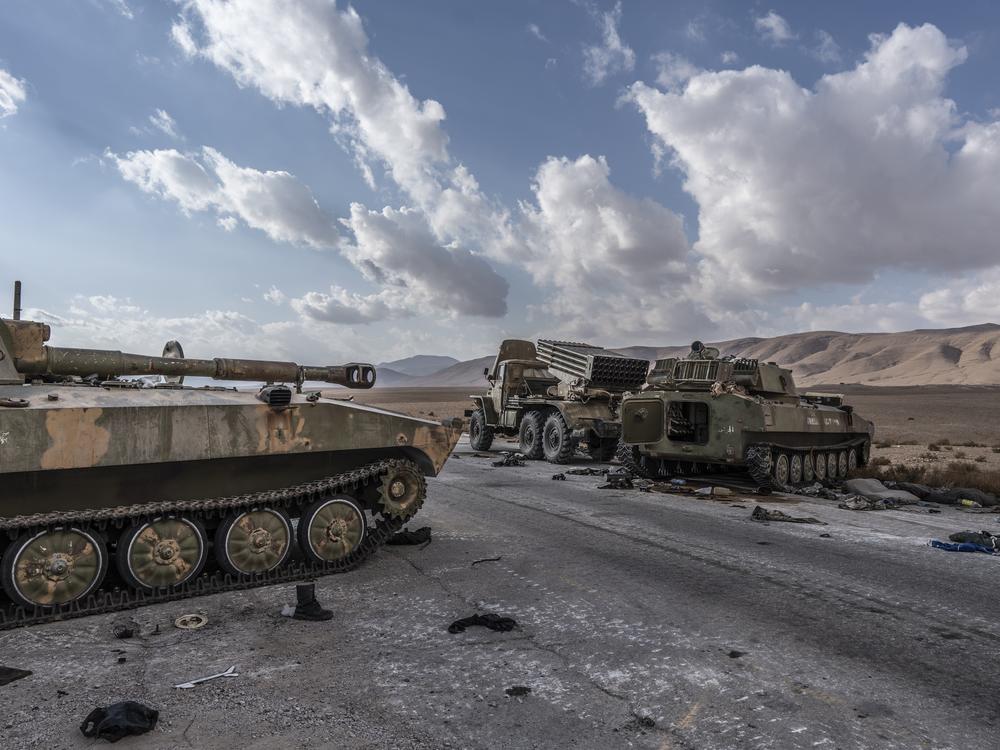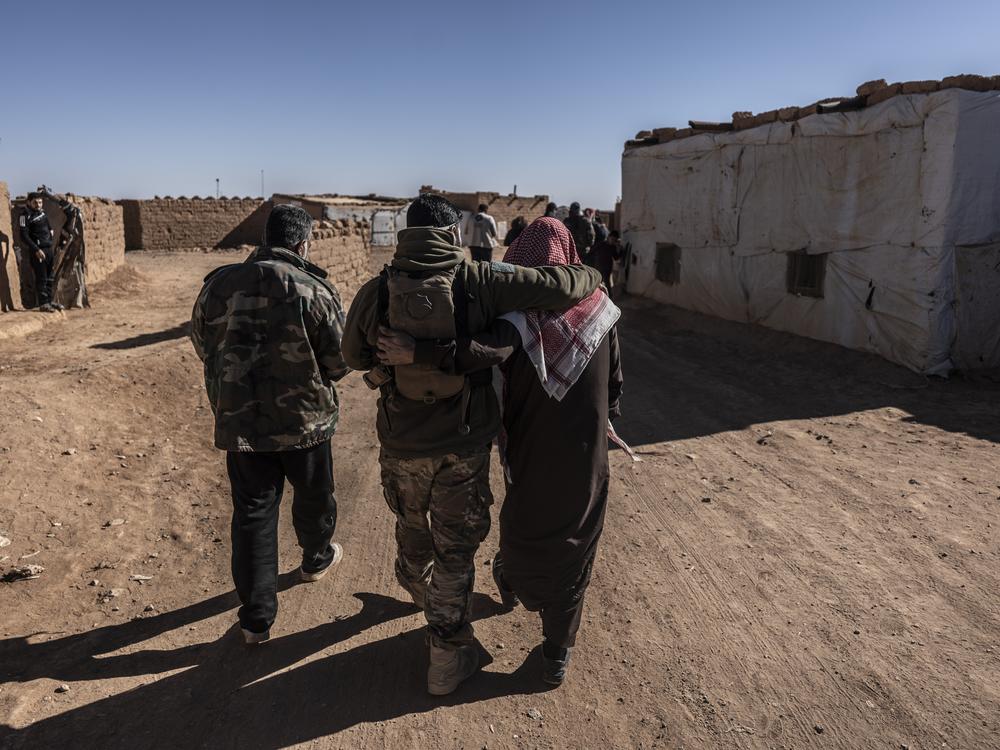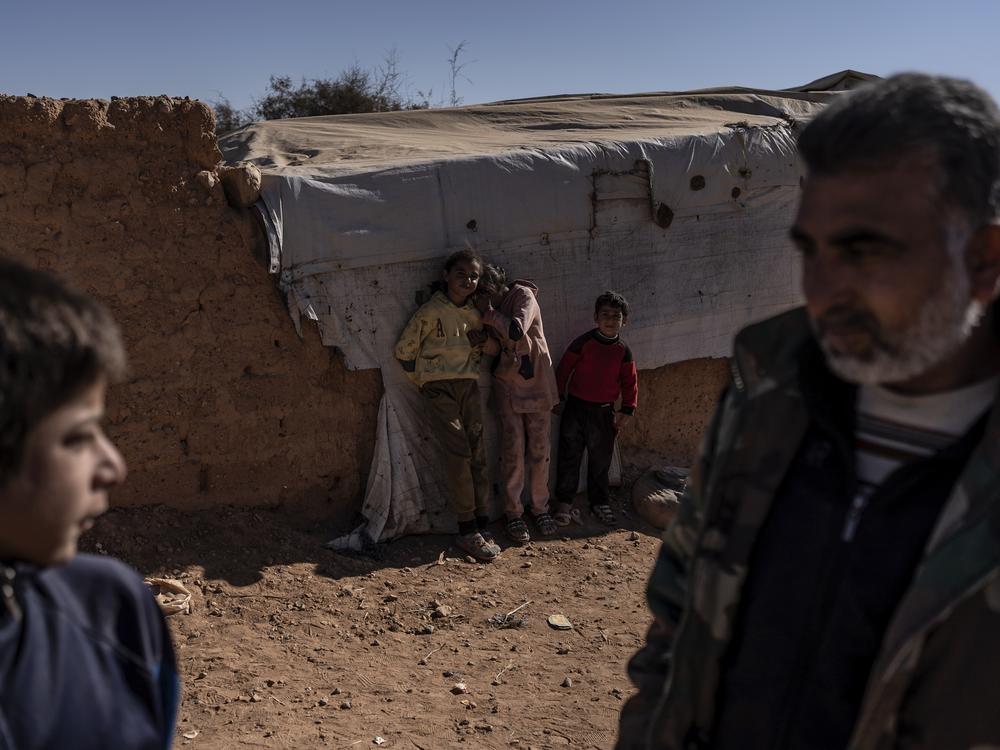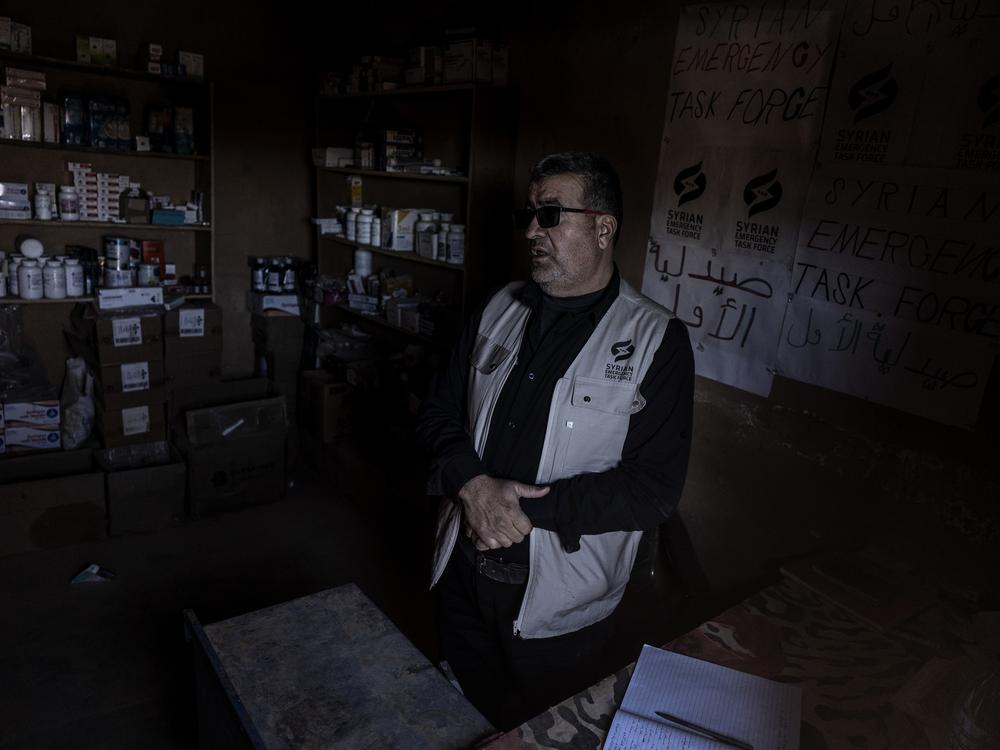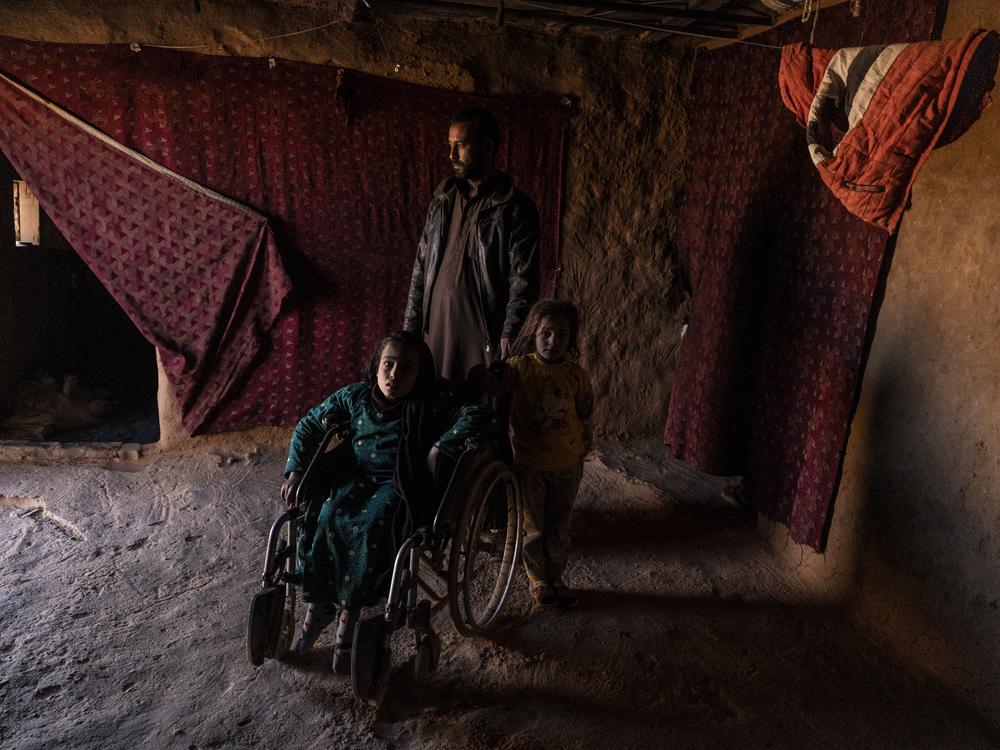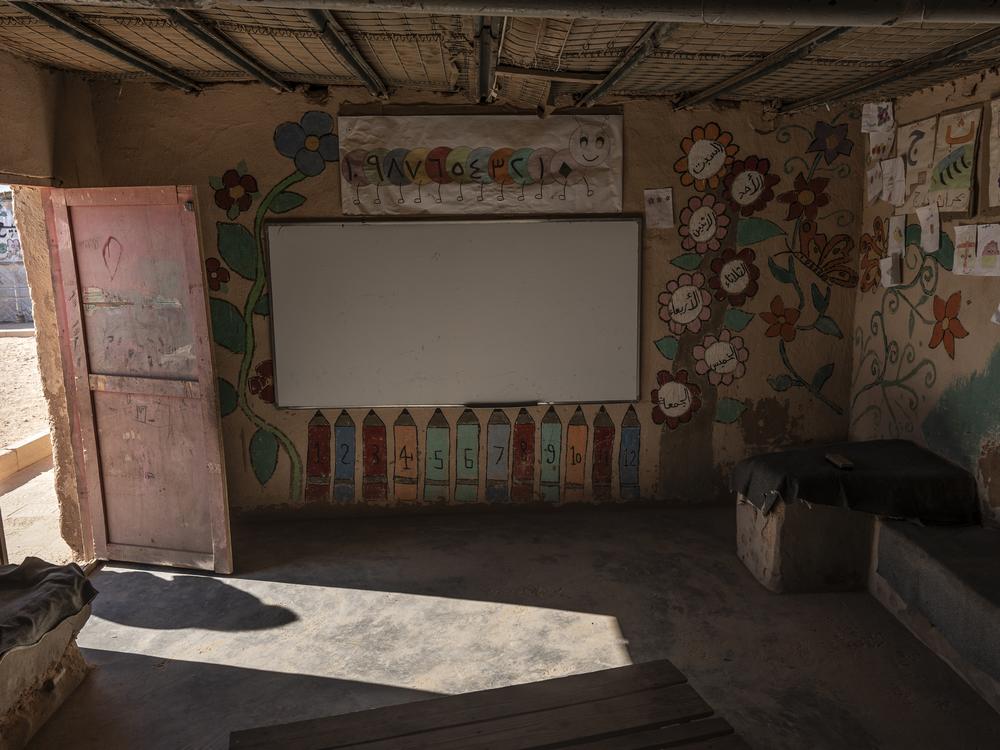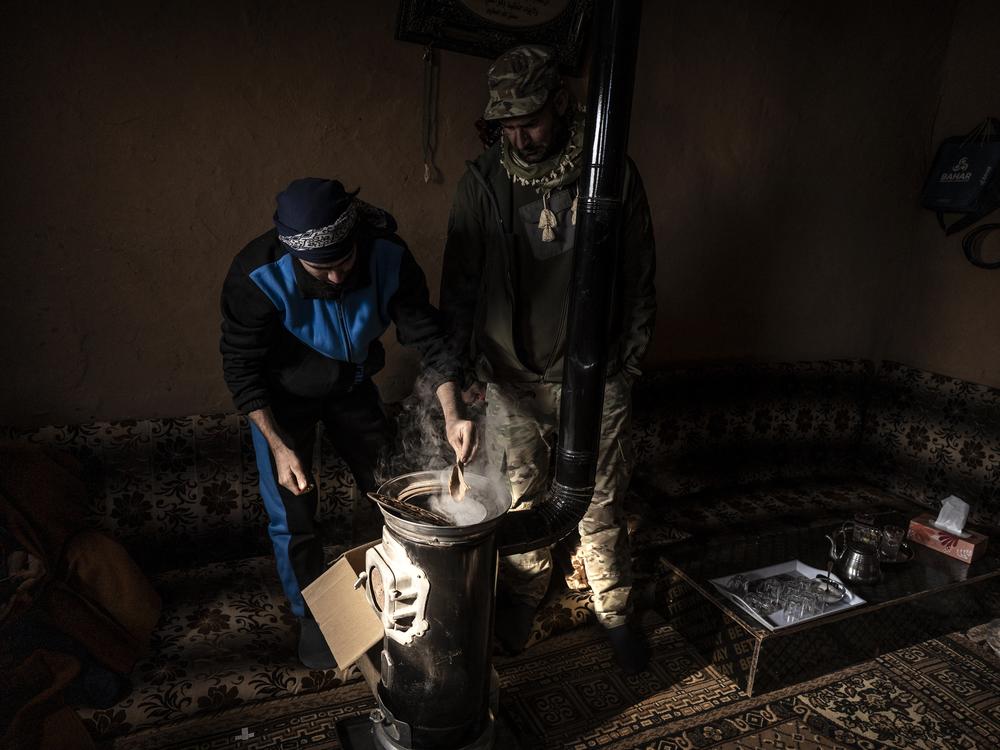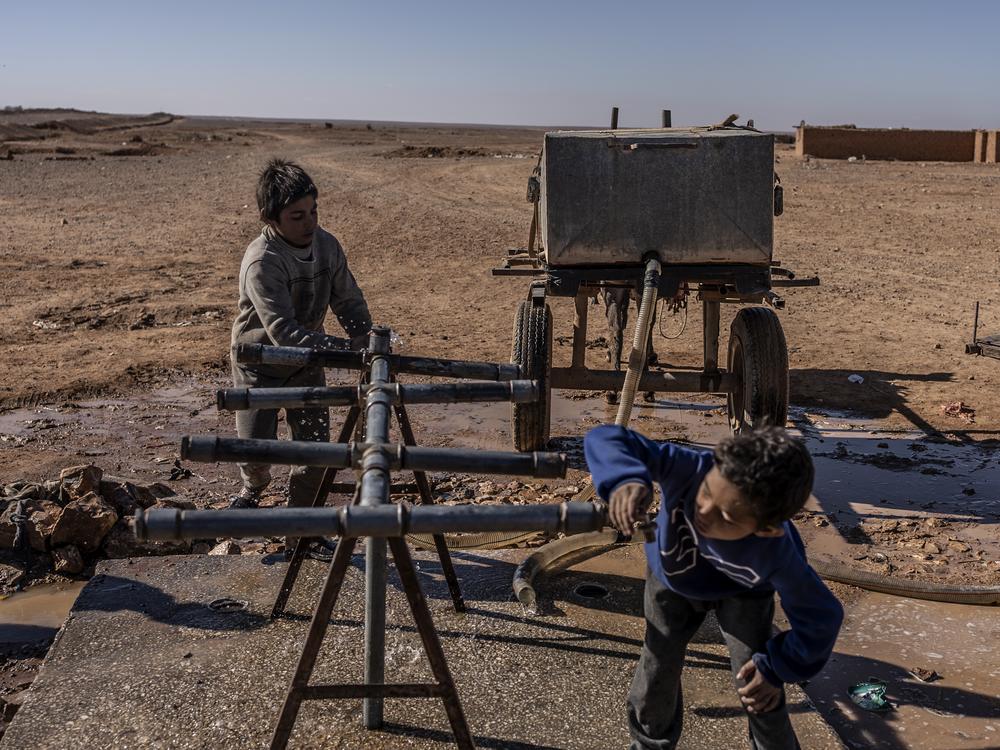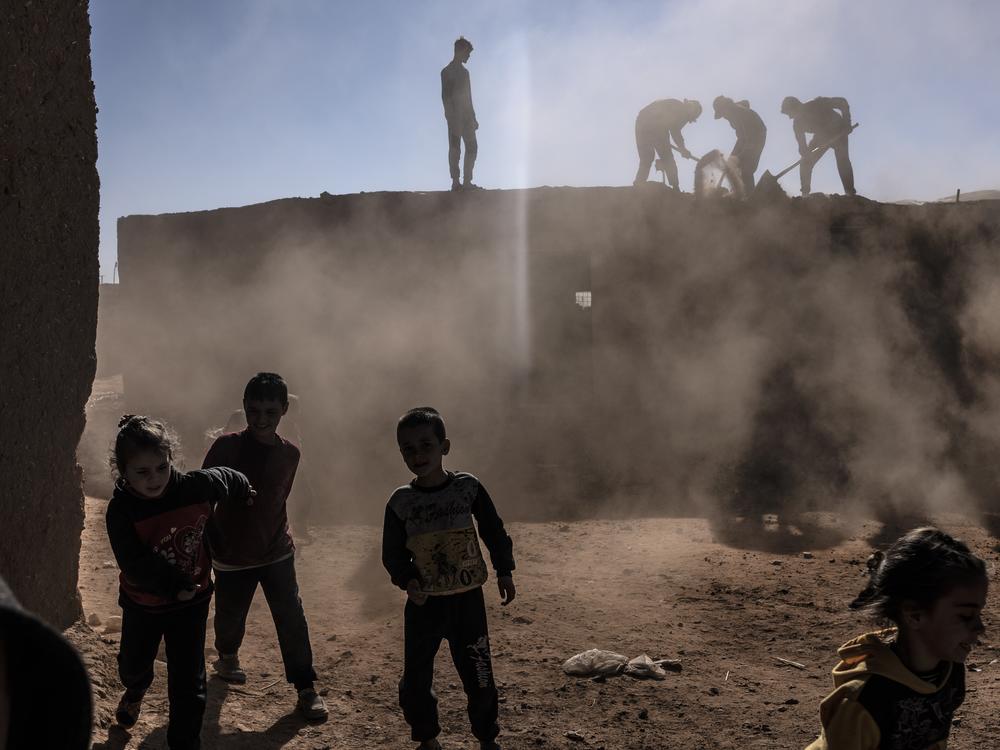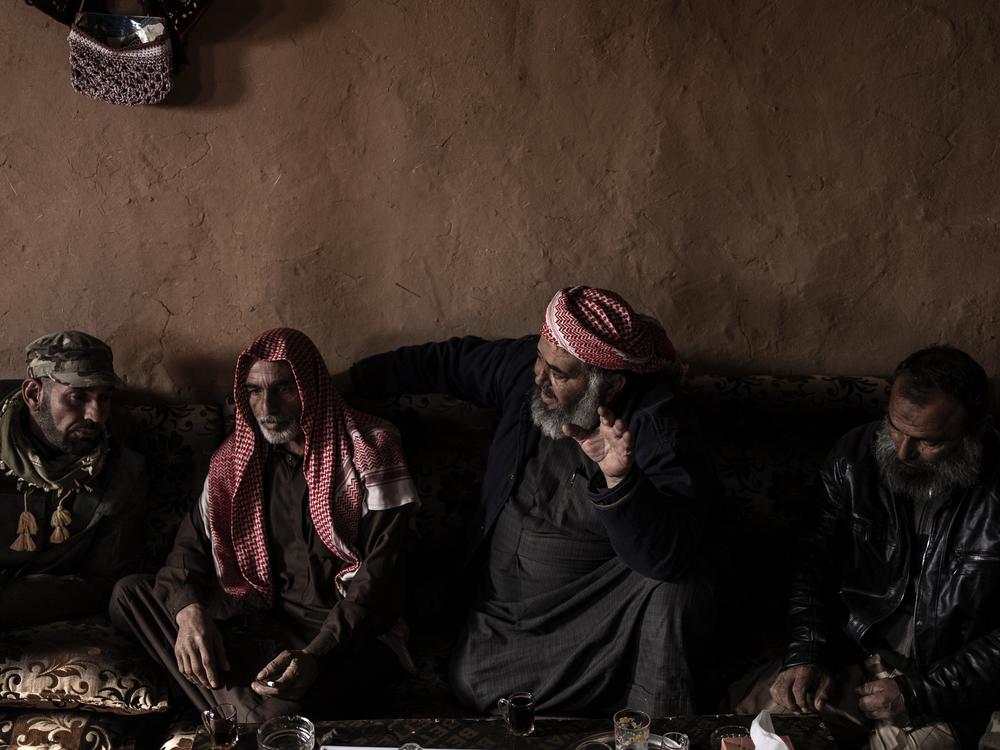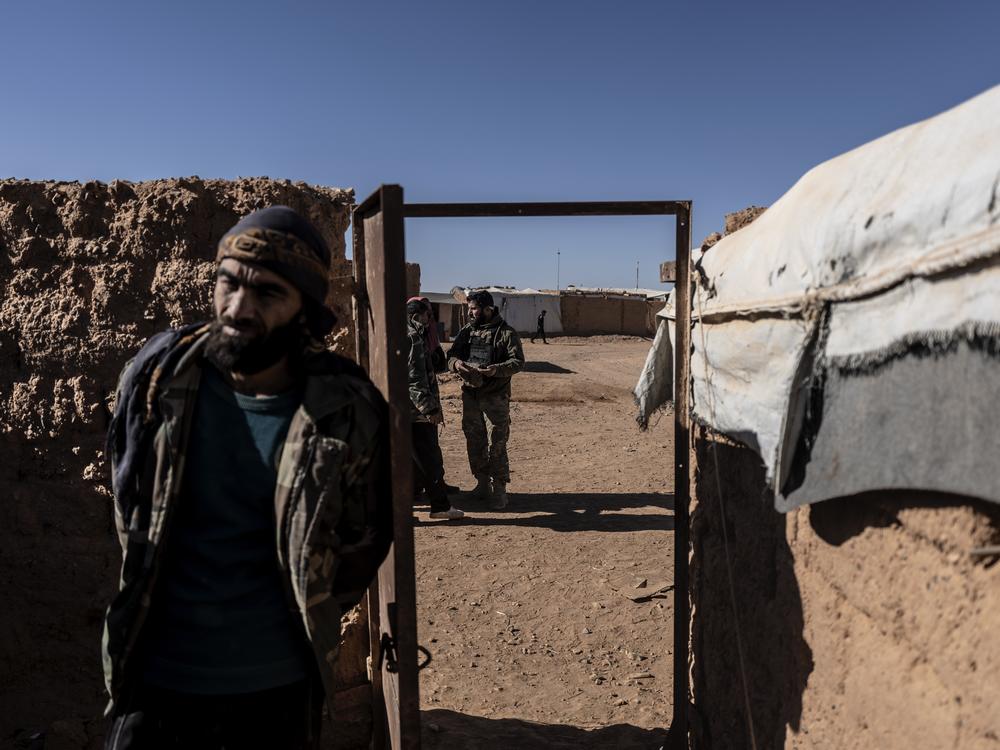Section Branding
Header Content
The Assad regime's fall has freed displaced Syrians stuck in a remote desert camp
Primary Content
RUKBAN CAMP, southern Syria — For almost a decade, thousands of displaced Syrians trapped in the desert struggled to survive in one of the most remote camps in the world; left without aid or medical care and largely forgotten by the outside world.
The Syrians — some of them soldiers and relatives of the U.S. -backed Syrian Free Army forces against now-deposed President Bashar al-Assad — arrived fleeing ISIS when the militant group swept into Iraq and Syria in 2014. They massed in a desolate corner of southeastern Syria up against the Jordanian border and hemmed in by Syrian regime and Russian forces on the other side.
With the fall of the Syrian regime this month, the more than 7,000 camp residents are finally free to leave. But the years of deprivation and isolation have taken a heavy toll.
The existence of the community speaks to the complicated regional politics and the low-profile U.S. military role in Syria, as well as the possibility of dramatic transformation in seemingly unchanging conflicts.
When Jordan sealed its border in 2016 after an ISIS attack killed six Jordanian soldiers, most of the Syrian civilians were trapped — unable to move forward or go back through roads controlled by the Syrian regime or even move through a desert laid with land mines.
NPR traveled to the camp, about a five-hour drive from Damascus — the first journalists to ever go there, according to the main relief organization here, the U.S.-based Syrian Emergency Task Force. The camp is about 30 miles from the U.S. military's al-Tanf garrison, established in 2016.
In January, Iran-backed Iraqi militia drones attacked a U.S. military support base — Tower 22 — just a few miles over a sand berm and across the border in Jordan, killing three American troops.
Tanks abandoned by regime forces line the main M2 highway, the roadside dotted with cast-off uniforms. Past the U.S. base, the road turns into a rough desert trail of tracks through the black rock.
"Before 2014 there were no people here at all," says Abu Mohammad Khudr, who dispenses medication from a tiny pharmacy established two years ago by Syrian Emergency Task Force. "We thought maybe the neighboring countries would help us but they didn't."
The first residents came with tents, which were no match for the constant wind, searing heat and bitter cold of the desert.
"After a while we decided we had to use the soil and water — so we made bricks and then we made walls and we built houses," he says.
After the suicide bombing, Jordan sealed the border — preventing even aid agencies from delivering food to Rukban. Water though is still provided by UNICEF, pumped from Jordan.
The sun-dried clay bricks, made by hand, are still the only building material for homes here. Instead of glass, small sheets of clear plastic cover the small window openings.
With Syrian regime forces and Russian troops controlling the road out of the camp, food was in short supply and sometimes consisted only of dried bread or lentils and rice.
"Most families ate just one or two meals a day," says Khudr.
In one home, Afaf Abdo Mohammed says when her children were infants she used plastic bags instead of diapers.
Her 16-year-old daughter, She'ala Hjab Khaled, was born with a spinal defect and spends the entire day sitting in a battered wheelchair. Syrian Emergency Task Force opened eight schools here two years ago, staffed with volunteer teachers from the camp. But She'ala has never been.
"I can't get there," she says.
Now free to leave, with the fall of the Syrian regime, very few residents have money for transportation to leave. Many are not sure if their homes still exist.
Among Syria's many and complex tragedies, the camp has been a particular preoccupation of Mouaz Moustafa, an activist and the director of the Syrian Emergency Task Force.
Two years ago he began organizing aid shipments for al-Tanf through a provision that allows humanitarian aid to be carried in unused space on U.S. military aircraft. He started bringing in American medical volunteers on two-week missions and persuaded the base commander at the time to visit the camp. Since then he says, U.S. forces have been involved in distributing aid there and when they are able, providing emergency medical care.
"It really brought everyone together more," says Moustafa. Syrian Emergency Task Force is funded by donations and staffed largely by volunteers. He says some of the soldiers who helped with the aid missions came back to Rukban to volunteer after being discharged.
That humanitarian assistance is not something the U.S. military publicizes. The U.S. military command over the years has declined to bring in visiting journalists to its nearby base — the only access route before the fall of the regime.
Syrian fighters funded and trained by the United States raised families in Rukban, according to a senior U.S. military commander. He requested anonymity to be able to speak about the camp because he was not authorized to speak publicly about it.
He said doctors on the base had delivered at least 100 of their babies at the base in the case of high-risk pregnancies.
The al-Tanf garrison, originally a special forces base, is now part of the anti-ISIS mission in Iraq and Syria. The presence of the U.S. military there helped protect residents from potential attacks by regime forces, he said.
Near the water pipes that supply the camp, boys come to fill up smaller tanks and to chase each other in the desert.
The environment here is filled with snakes and scorpions — but no trees. Some of the children have never tasted fruit. They've never seen in real life bright flowers or butterflies like the ones painted on the walls of the mud-brick schools set up by the Syrian American organization.
Winter here is particularly cruel. Those who can afford to buy sticks of wood to burn in small metal stoves for heat.
In one of the clay houses, Fawaz al-Taleb, a veterinarian in his home city of Homs, said he couldn't afford to buy wood this year.
"We burn plastic bags, bottles, strips of old tires," he says. "This has been our life for years."
Respiratory and other diseases are rampant here. For almost a decade, without a single physician in this camp, when children died, their parents often didn't know why.
Outside Taleb's home, there are the beginnings of a garden started with seeds distributed by Moustafa's organization to camp residents. There isn't much that grows in the barren ground here, but Taleb points out fledgling mint, garlic and potato plants. Next to them are lillies and a rose bush.
"I've been trying to plant hope," he says. "We want to live, we don't want to say 'we were born here and might die here.' No matter how bad the situation, we still want to live."
